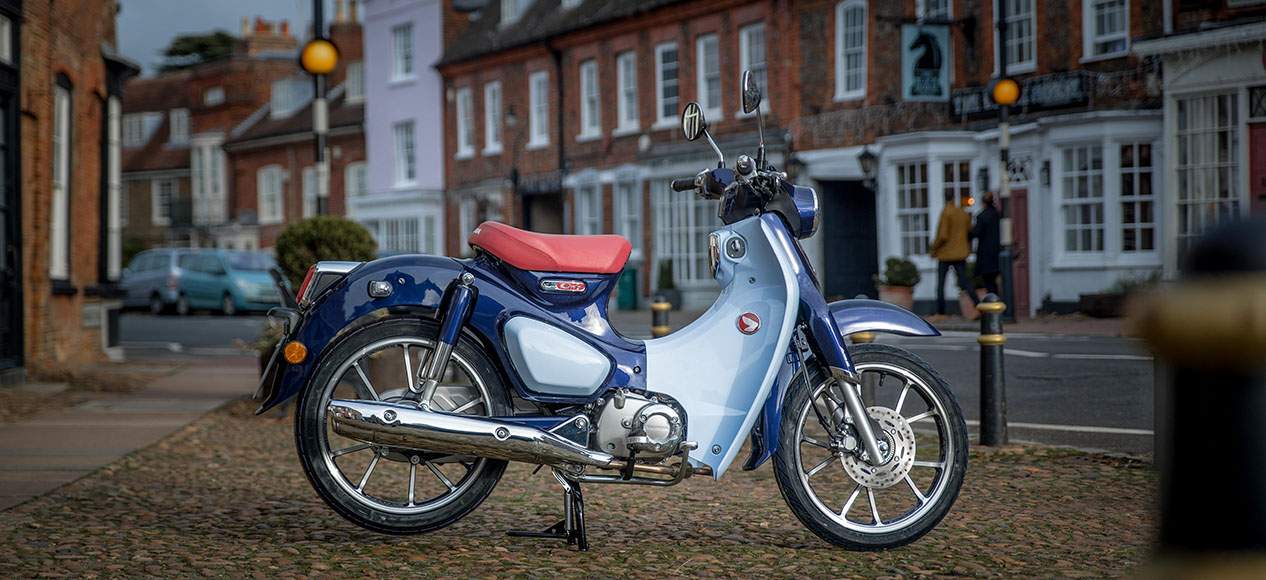Honda’s iconic Super Cub is back, with a new 125cc version now on sale in the UK. But what’s it like to ride? Insidebikes hit the road on one to find out…
As far as legendary motorcycles go, there are none more legendary than the humble Honda Super Cub. Known mostly for its C90 variant in the UK, more than 100 million examples of this most basic of commuters have been built since 1958, making it the world’s biggest selling motorcycle of all time. If you haven’t ridden a Cub yourself, chances are that you know someone who has…
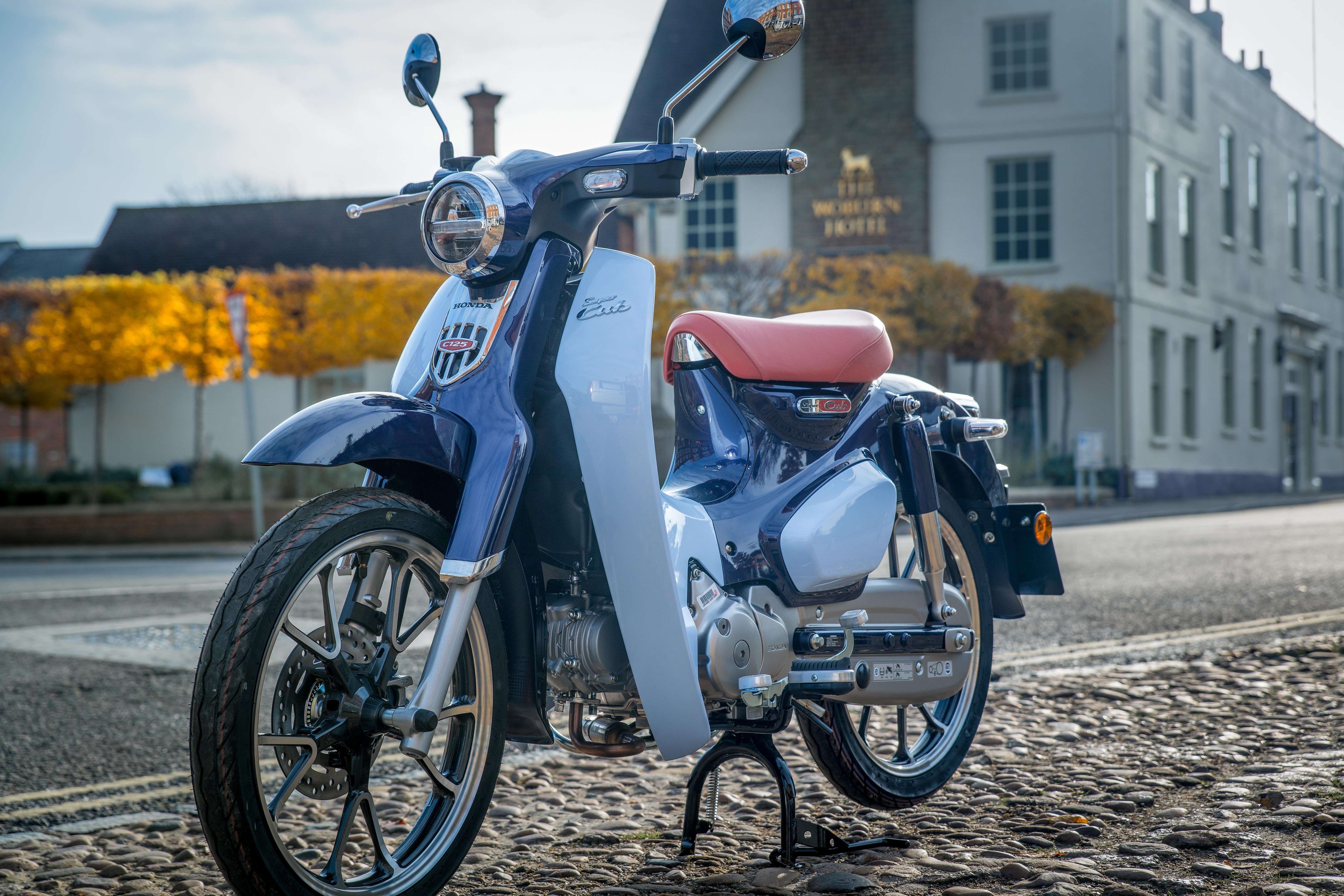
No wonder then, that the rebooted, 125cc version, of the Cub gained huge worldwide interest when they were announced at the big bike shows in 2017 – after all, so many riders had their first taste of motorcycling on a Honda step thru.
One would imagine that reinventing the Cub was a difficult task for Honda’s engineers, as step thrus have evolved into twist and go scooters which are more practical in every way. Indeed, Honda has defined the breed with its class leading PCX125, a scoot that regularly tops the UK sales charts and which is supremely practical and easy to ride, with plenty of underseat storage and a seamless automatic transmission. By contrast, ride an old C90 today and you’d be hugely underwhelmed (and possibly even a little scared). The drum brakes are weedy and inadequate, the leading link suspension terrifying as it rises under braking, and the heel and toe gearchange clunky. All of these ‘characteristics’ add to the charisma of the Cub, but the challenge would be how to bring the concept up to date and suited to modern riding, while retaining the very essence of what makes a Cub a Cub.
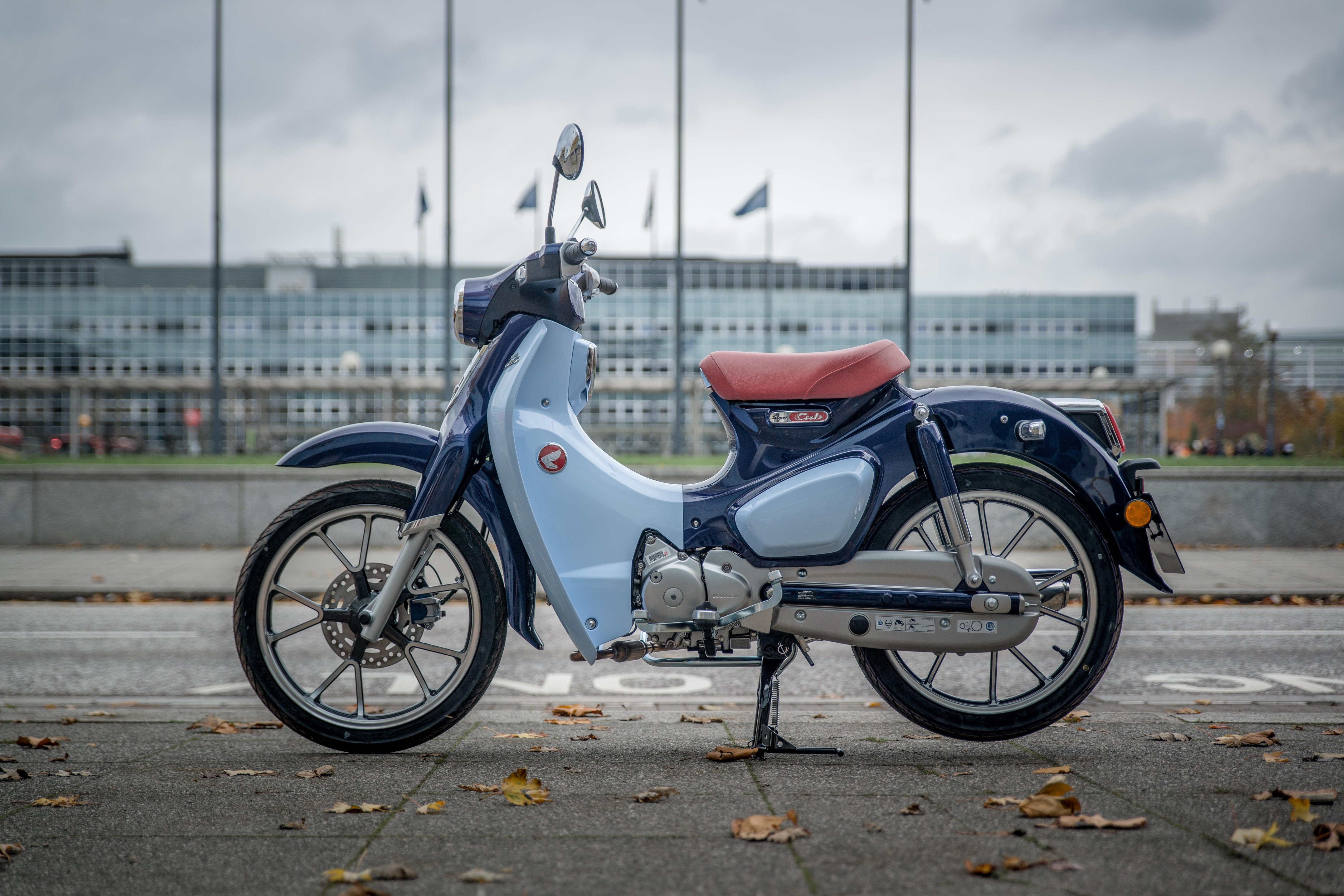
Honda holds a 3D trademark on the original Cub styling, so it’s no wonder that the silhouette remains true to that classic step thru – deliberately retro but complemented by subtle modern tech like full LED lights and digital instruments.
Climb on board and you’re greeted by the most minimalist of views. The speedometer sits exactly where it did on my old C90, incorporated into the centre of the handlebars. It’s a tiny, circular, design but the main thing you need to know – the speed – is clear as day to read. The whole thing is neat as you like and an example of the C125’s modern side. The instruments are fully digital and incorporates a neat little fuel gauge and gear indicator too.
Keeping up with the modern tech, Honda has equipped the C125 with a keyless ignition system that detects when the fob is in range. Stick it in your pocket, and a knob on the right hand side operates the ignition and steering lock. Compared to the increasingly large 125cc scoots on the market, the Cub feels lithe and streamlined. The traditional steel backbone frame is not encumbered by a large tunnel hiding a fuel tank running down the middle, making it a doddle to get on and move around on. Really stylish cast wheels are another modern touch (originals wore spokes) while the fully enclosed chain is another retro throwback.
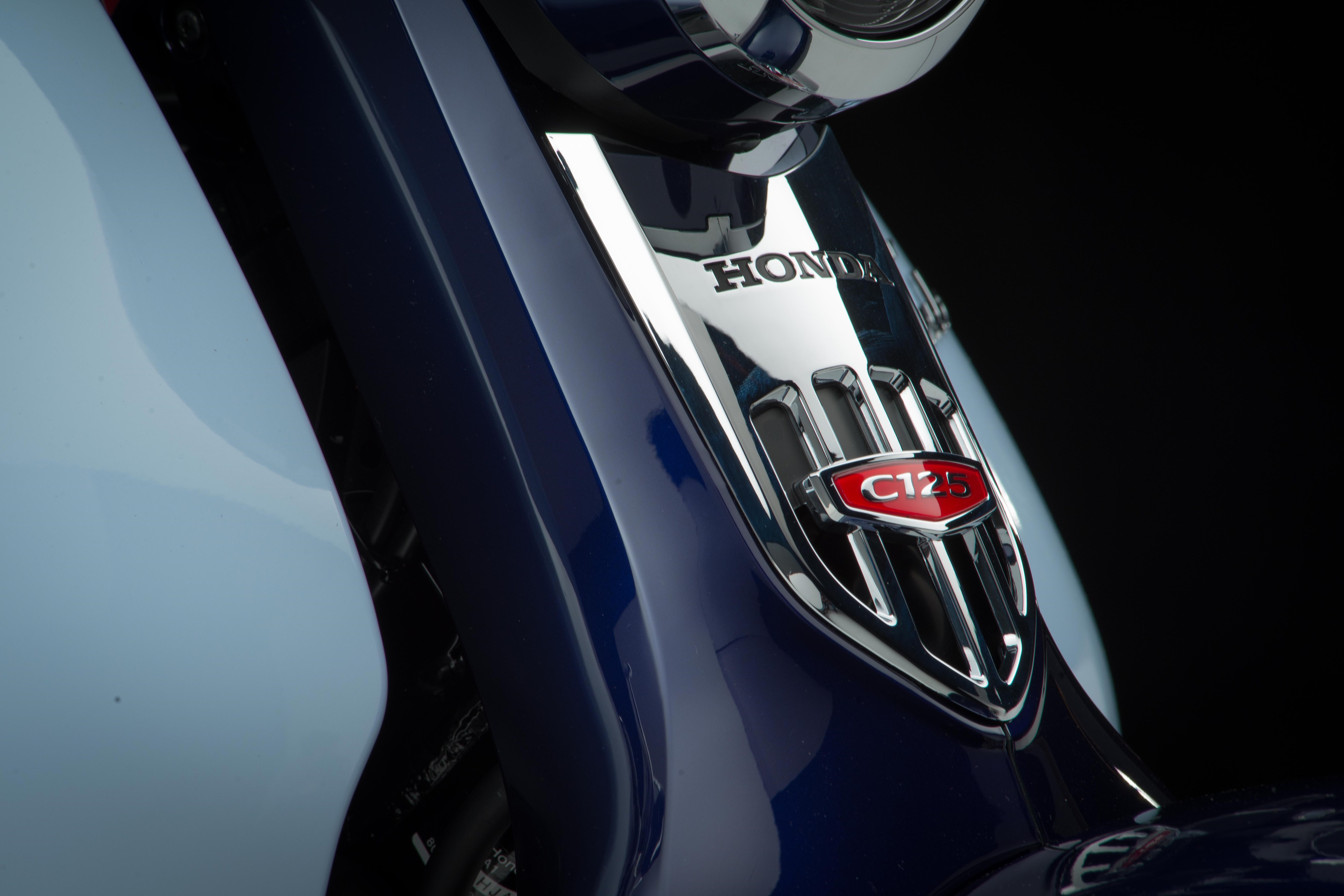
Sure, the weather protection is not as good as on modern scoots like the PCX but the C125 feels so light and simple. Push the starter and the two-valve air-cooled motor whirred almost silently into life. In true Cub style, the C125 runs a semi-automatic transmission system. The four-speed ‘box is manually operated but features an automatic centrifugal clutch that means there’s no need to pull in a clutch lever when you want to change gear. Personally, I would rather my scoot was a fully automatic twist and go, but the semi-automatic gearbox is so fundamental to the Cub folklore that it’s no real surprise that Honda has gone down this route. It does require more rider input, especially ensuring that you’re in the right gear pulling away from junctions, but it’s simple to operate and a charming touch. The heel and toe lever is another classic Cub touch, meaning that you can shift up but pushing down with your toe to go up the gears, and with your heel to go down – ideal if you choose to ride while wearing smart shoes, as they did back in the day. While it’s a smooth and relatively silent experience, the C125 makes a little whirring noise as the clutch slips and engages – just like it did on the old C90.
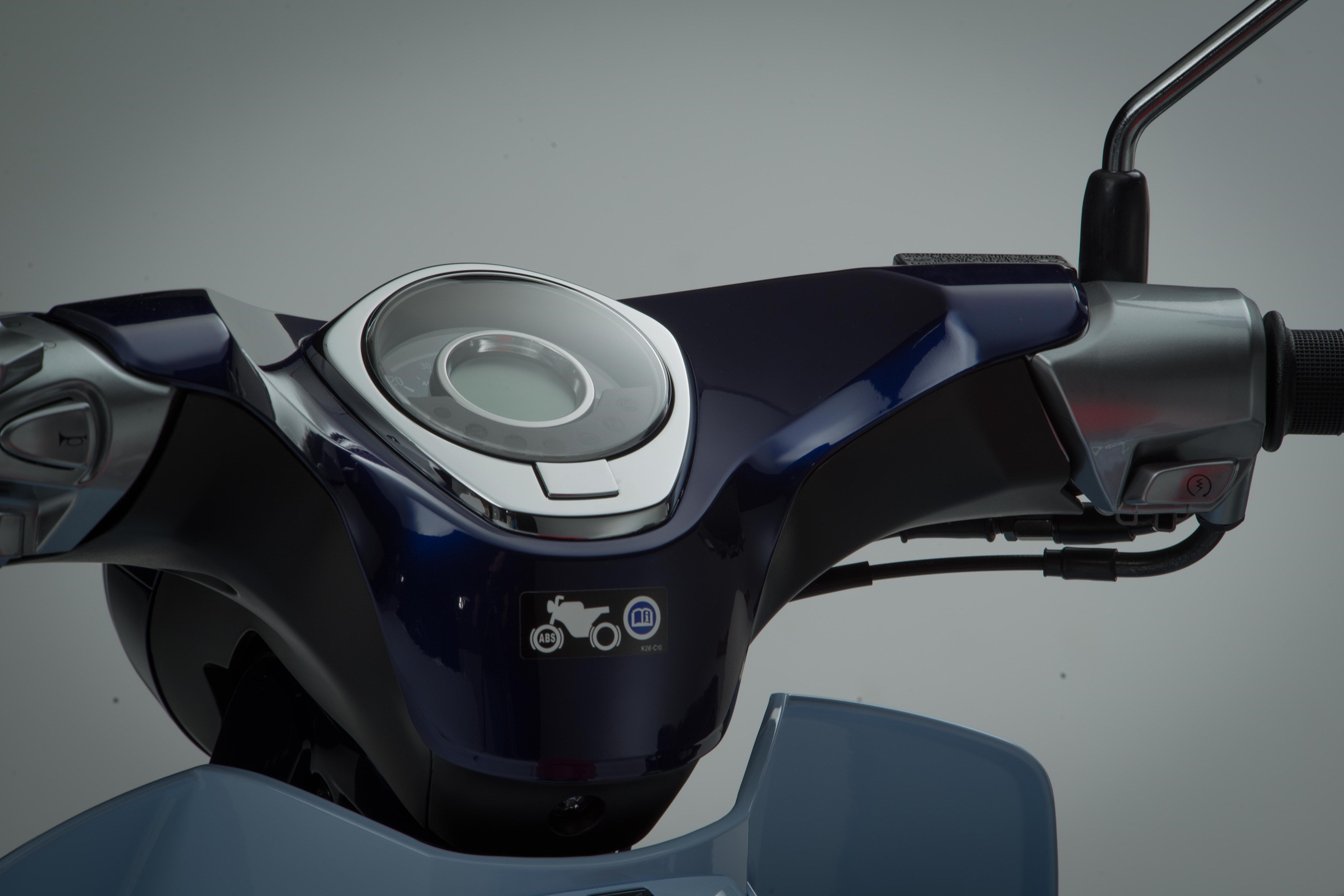
Performance isn’t what the Cub is all about, but acceleration is lively enough. It’ll top 60mph in the right conditions, and overall the handling is light and easy. The 17” wheels are bigger than on most modern scooters and contribute to the feeling of a tall riding position and agile steering. Conventional telescopic forks and a disc front brake (with ABS) mean that the modern interpretation of the Cub is as assured as the old one was terrifying. The tiny chrome mirrors look cool but could be a bit bigger in my mind, even if they are adequate.
The Super Cub is a great little commuter that’s chic and stylish. It’s ultimate ability is compromised by the fact that the designers needed to remain true to the 1950s heritage, but it is more than capable of holding its own in today’s faster and more congested traffic.
Honda’s own PCX125 is way more practical, and their Monkey 125 more fun, but the Super Cub still has that certain aura about it. For urban riders who don’t need much by way of carrying capability, the Super Cub is super cool and super agile. At £3399, it’s a good few hundred pounds more than the venerable PCX but £300 less than the Monkey. It’s also super cheap to run, with around 150 miles range from the tiny 3.7 litre fuel tank.
Specifications
ENGINE |
|
| Type | Air-cooled SOHC four-stroke two-valve |
| Displacement | 125cc |
| Bore x Stroke | 52.4 x 57.9mm |
| Compression Ratio | 9.3:1 |
| Max. Power Output | 9.5bhp @ 7,500rpm |
| Max. Torque | 10.4Nm @ 5,000rpm |
| Oil Capacity | 1.0 litres |
FUEL SYSTEM |
|
| Carburation | PGM-FI electronic fuel injection |
| Fuel Tank Capacity | 3.7 litres |
| Fuel Consumption | 188.4 MPG (WMTC mode) |
ELECTRICAL SYSTEM |
|
| Starter | Electric |
| Battery | 12V-3.5AH |
DRIVETRAIN |
|
| Clutch Type | Wet multi plate clutch and automatic centrifugal clutch |
| Transmission Type | Four speed |
FRAME |
|
| Type | Mono-backbone steel frame |
CHASSIS |
|
| Dimensions (LxWxH) | 1,915 x 720 x 1,000mm |
| Wheelbase | 1,245mm |
| Caster Angle | 26.5° |
| Trail | 71mm |
| Seat Height | 780mm |
| Ground Clearance | 125mm |
| Turning radius | 2.0m |
| Kerb Weight | 109kg |
SUSPENSION |
|
| Type Front | 26mm telescopic fork |
| Type Rear | Twin shock |
WHEELS |
|
| Type Front | 10-spoke cast aluminium |
| Type Rear | 10-spoke cast aluminium |
| Tyres Front | 70/90-17M/C 48P |
| Tyres Rear | 80/90-17M/C 50P |
BRAKES |
|
| Type Front | Single 220 mm hydraulic disc |
| Type Rear | 130mm drum brake |


